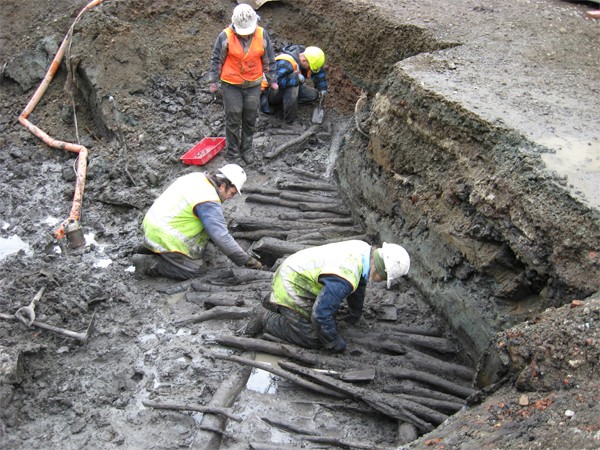Archaeological authorities key to unravelling the past
Tuesday 1 July 2008, 8:59PM
By NZ Historic Places Trust - Pouhere Taonga
1,347 views
The New Zealand Historic Places Trust (NZHPT) says recent publicity about archaeological finds in and around Dunedin city highlights the importance of the Trust’s work and in particular, the value of its archaeological authority process. Owen Graham NZHPT Otago/Southland Area Manager said that ``the discovery at the Dunedin City Council’s Wall Street development site this week was a very important find and an extremely good example of the reasons why the Trust’s archaeological authority process is in place’’.
Mr Graham said ``The NZ Historic Places Trust under the Historic Places Act 1993 (HPA) has responsibility nationally to promote the identification, protection, preservation and conservation of the historical and cultural heritage of New Zealand, with statutory responsibility to administer the archaeological authority process under Part 1 Sections 9 -20 of the Act. The HPA defines an archaeological site as ‘any place in New Zealand that was associated with human activity that occurred before 1900’’.
``Sound practice is to seek archaeological advice during the early planning and design stages if there is a potential for archaeological values to be impacted upon by development works. Over 300 archaeological authorities are processed by the NZHPT nationally each year. In Dunedin significant archaeological evidence of Dunedin’s early history has been uncovered at St Clair and the DCC Wall Street development site this year. In each case, the NZHPT archaeological authority process has been effective in ensuring that the historic and archaeological information and artefacts were not ‘lost’ to us all,’’ Mr Graham said.
Trust Regional Archaeologist, Dr Matthew Schmidt said recent archaeological investigations in Dunedin highlight just how important the archaeological authority process is nationally. ``At St Clair esplanade, a site was discovered accidentally by a passer-by. When it was investigated by a team of archaeologists, it was found to be a 14th or 15th century moa hunter site. The archaeological process worked really well there with the owner/developer very supportive throughout’’.
Dr Schmidt also said ``in the most recent find at the DCC Wall Street development, the site archaeologist Peter Petchey has uncovered what is thought to be a causeway across a stream made from local timber, possibly dating from the 1840s. The site today is in the central retail area of Dunedin, but in the late 1840s would have been very boggy and muddy. Having the Archaeological Authority and an archaeologist on site is an extremely good example of the reasons why the archaeological authority process is in place. It is the archaeological authority process administered by the NZHPT which ensures that opportunities like this to unlock pieces of our past are not lost. This discovery and others nearby are starting to allow archaeologists to piece together important stories about the earliest days of Dunedin settlement’’, Dr Schmidt said.
Information on the NZHPT archaeological authority process is available on the Trust website www.historic.org.nz . The NZHPT has 11 archaeologists working across New Zealand.
It is unlawful for any person to destroy, damage or modify the whole or any part of an archaeological site without the prior authority of the New Zealand Historic Places Trust. This is the case regardless of whether the land on which the site is located is designated, the activity is permitted under the District or Regional Plan or a resource or building consent has been granted. The requirement for an archaeological authority applies equally to public land as it does to privately owned land.
